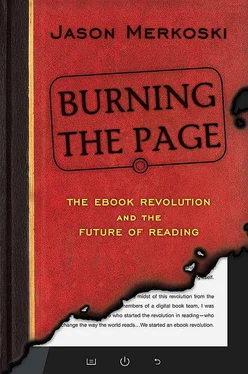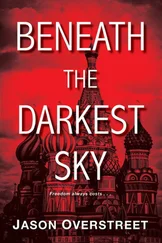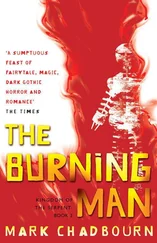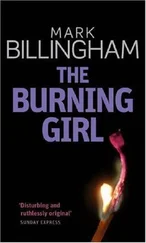Of course, if an e-reader were to launch anywhere first, it would have to be Japan! The Japanese are among the most techno-literate of all cultures. I’ve traveled to Japan a lot, and I always smile when I encounter new tech marvels there, feeling rather like a bearded German in a fur cap from Gutenberg’s time transplanted to modern-day Tokyo.
I’ve gone to the Sony showroom to see the display of next year’s toys and gadgets, the talking dogs and robot servants, things that you won’t see on shelves in the United States for months or maybe years. I remember once standing outside a Tokyo convenience store for five minutes, trying to figure out the way inside, before noticing a subtle hand-plate recessed into the wall to touch and open the door. Even Japanese toilet technology is extreme—the Japanese are truly techno-obsessed.
But they weren’t obsessed enough for ebooks to take off when the Sony e-reader launched in 2004. The Japanese language is a challenging one, and the Sony device didn’t do a great job of rendering content in that language. Plus, there simply weren’t many ebooks to buy. So Sony took the product to the United States in 2006 and launched a revamped e-reader here.
Now, Amazon had time to watch Sony and learn from its mistakes. Amazon followed what its competitor did best by using eInk displays and basic metaphors like bookmarking and page turns. But Amazon had also accumulated ten years of book knowledge and was sitting on millions of books in its fulfillment centers.
Almost half of all the books bought in North America are sold through Amazon.com. It represents the single biggest chunk of the bookselling pie. Unlike Sony, Amazon had customer brand loyalty for its books, because it had started by selling books online and had worked hard to build its brand. Any early adopter of Amazon.com in the 1990s was given all sorts of freebies with every order, like T-shirts and coffee mugs.
Amazon succeeded at ebooks in part because Kindle was a new business line and capitalized on the company’s success in the bookselling market. Kindle also didn’t have to worry about turning an immediate profit, unlike the Sony eReader. The Kindle organization was in some ways a startup within Amazon and benefited from Jeff Bezos’s venture capital infusions, long-range vision, and full support. Amazon was in digital media for the long haul. Since nearly all of its sales still came from physical media when the Kindle project started, Amazon clearly knew it would have to take a long-term view of digital media, like ebooks, to keep growing.
The other reason Amazon succeeded was because it focused on creating an easy, seamless customer experience. Consider trying to use Sony’s e-reader when it was first launched in the United States. To read a book, you had to:
1. Download an application to your PC.
2. Find a book you wanted.
3. Log in.
4. Purchase the book.
5. Authorize your computer to use the Sony device.
6. Download more software from Adobe.
7. Authorize yourself with Adobe.
8. Go back to your library and try to download the book.
9. Synchronize the book with the device (assuming you have the right cable to plug into your computer).
10. Wait a few minutes for it to (hopefully) finish copying.
11. Disconnect the device from your PC. Now you could read the book.
Whew! In comparison, the Kindle is simple: you go to the online store; you find a book you want; you buy it with one click; and then it downloads immediately and you start reading. No hassle; nothing to it. Delivering content to Kindles is that easy because each device has a built-in cell phone that is always on and connected to the national network.
There have been two great inventions so far in the twenty-first century. The iPhone is one of them. And even if I didn’t work for Amazon, I’d say that the Kindle is the second. Ebooks as we know them finally took off because of the Kindle’s embedded cell phone and free data plan. Without a connection to the cloud, I don’t think ebooks would have become mainstream.
A network connection goes beyond making it easier to get content onto an e-reader. It also makes it possible for you to instantly read an ebook loaned to you by a friend or to freely sample the first chapter of millions of ebooks. In addition, the network lets you easily redownload books you’ve previously purchased. You can even accidentally break an e-reader and redownload all your old books onto a new e-reader with no hassle or technical wizardry. The network acts like a safety net for all of a Kindle’s content.
Technically speaking, we could have had ebooks as early as the 1970s. That’s when people started digitizing the first ebooks. In fact, I can imagine librarians in their bell-bottom jeans and with their “Whip Inflation Now” pins archiving books onto microfiche. I can imagine a digital revolution for ebooks starting back then. As I mentioned earlier, scientists at Xerox discovered eInk in the 1970s. They could have developed e-reader hardware using electro-phosphorescent displays. Instead of Amazon digitizing the world’s content, the Library of Congress could have been doing it. They could have started digitizing their holdings in the late 1970s, Xerox could have made the device, and the teletype network could have been used to distribute content. Though the process would be considered slow by today’s standards, an average ebook could be transmitted over teletype in about ninety minutes.
But that’s a future that never was.
Sony started the ebook revolution. But if Kindle was to do for reading what the iPod did for music and what TiVo did for digital television, Amazon needed to make a device that not only used the cell phone network, but also took advantage of new game-changing technologies such as eInk, which is touchy and temperamental.
I’m not going to try to fully explain how eInk works, with its vocabulary of ghosting and quantum mechanical waveforms. You see, eInk is actually based on quantum mechanics. I studied quantum mechanics at MIT, and I still don’t fully understand eInk!
Perhaps the most appropriate metaphor for something like eInk, which is at once scientific and magical, is that of the Magic 8 Ball. You shake it up and ask a question, and a ghostly white answer mysteriously floats to the surface. That’s similar to how eInk works. A bright-white particle, usually made from titanium rust, is electrically charged and floats in black ink. But instead of shaking the ball to get the white to rise to the surface, you apply an electrical charge.
If you do this enough times, with hundreds of thousands of tiny bits of titanium rust, you basically get the modern eInk screen. The ink is black, and the charged particles are white, producing the two simplest colors on an eInk screen. To get shades of gray, you apply a quick pulse of electricity, just enough to attract some of the particles, but not all of them.
Arthur C. Clarke could have been describing eInk when he said that “any sufficiently advanced technology is indistinguishable from magic.” True, eInk is complex, but it requires very little power. In fact, an eInk-based device can function on as little as one charge a month. This was the game-changing technological leap that allowed the ebook revolution to start.
I don’t annotate my books. Personally, I think that defiles the printed page. But I know that some people see annotations as a cherished way of life, a way of reconnecting with themselves as they were across the span of years. These people can look at their books and see what they highlighted years earlier with their pencils or fluorescent markers.
All e-readers let you annotate to your heart’s content. You can underline whatever you want, and your annotations and highlights will, of course, follow you from device to device. That is, assuming you buy devices from the same manufacturer.
Читать дальше












